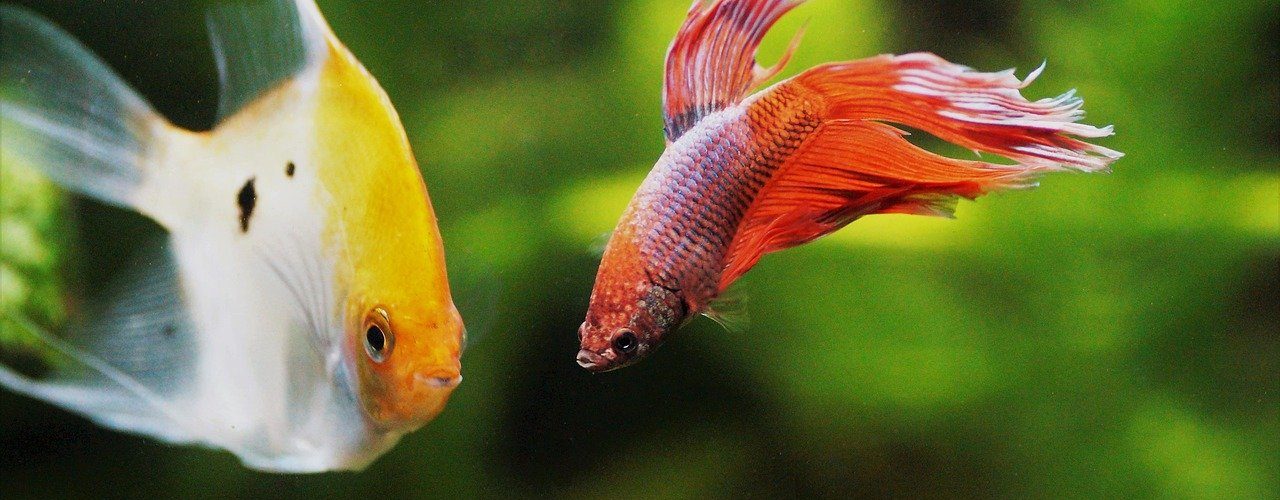Last Updated on February 10, 2023 by Matt
Betta fish are notorious for being aggressive towards each other and other fish. Not surprising for the fish also known as the Siamese/Japanese fighting fish.
While Betta fish are stunningly beautiful, you need to be very careful with what fish you pair them with in a tank, as it can backfire badly. You need to ensure that you have fish that are compatible with Betta fish in your Betta tank. That is extremely important.
If your fish don’t get on, both fish can sustain injuries, get put under great amounts of stress, and this can lead to their health declining rapidly, even to their demise.
It isn’t all doom and gloom though. There are plenty of fish which can cohabit with a Betta fish and they will both flourish. Don’t expect best friends but they won’t attack each other!
It can be very hard to find a suitable tankmate for a Betta fish, and you don’t really want to have to resort to trial and error. That will only end up in injured fish and an unhappy and guilty you!
Hopefully this article will give you some useful advice on what fish can live with bettas.
IN THIS ARTICLE
Can Betta Fish Live With Other Betta Fish?
When it comes to males, NO!!
This is a very strong no. Two or more male Betta fish in the same tank will inevitably end in disaster. They are highly aggressive and territorial, and WILL attack other males.
Having a mixed male and female tank will also end badly. Breeding Bettas takes a lot of patience and time, as males and females will attack one another if not introduced slowly and carefully.
You can have multiple females in the same tank however. It is called a sorority tank when multiple female bettas are kept in the same tank.
This isn’t recommended for beginner aquarists though, as female bettas are still highly aggressive and territorial, almost as much so as the males, so a sorority tank takes a lot of attention and upkeep.
If you have more experience and want a new challenge, then having a sorority tank will look beautiful and be very rewarding.
Checklist For Your Search
Betta fish are notoriously territorial and aggressive, so getting the right tank mate is very important.
This guide will give you a few great ideas for the perfect tankmate for your betta fish. But when you are deciding, follow this simple checklist and you should avoid having any misbehaving fish.
- No large fish. Your betta fish needs to be the boss in your tank. If you have a larger fish in your tank then your betta will be intimidated and likely to lash out.
- Aquarium size. Make sure that you have enough space to actually house more fish with your betta. Betta fish need a minimum of 5 gallons in the tank to have as its personal territory; check out our article on the best betta fish tanks. With a community tank more space will be needed.
- No overly colorful fish. Housing colorful fish with your betta can trigger territorial and aggressive behaviors. They will see the colors as a warning, and think it is trying to claim number 1 spot in the tank!
- No fish with long fins. Betta fish are known to bite and nibble at fish with long fins like theirs. They must get a bit jealous! Fish with long fins will get very stressed having the betta biting them
- Ornaments. Having Betta plants and other ornaments in the tank can ease the relationship between your betta and any fish. Having a place to hide when intimidated or stressed will work wonders.
- Bottom feeders. Bottom feeding fish are a great way of cohabiting with a betta. They tend to keep to themselves and stick to the base of the tank, so will stay out of your bettas way!
- No aggressive or biting fish. While this may seem obvious, please do research or ask about the temperament of the fish species you want to house with your betta. Having a fish which bites or bisplays other aggressive behaviors is asking for trouble.
- Diet. This is for both you and your fish. If the dietary requirements are similar in all your fish then you will have an easier time in keeping them all healthy and happy. If they each have strong preferences then they may become stressed if they are given the wrong food, or it may make them ill.
What Fish Can Live With Bettas?
This is a little list of the fish that will definitely cohabit nicely with your betta. While you don’t need to get these fish, they won’t rile up your betta.
If you want to go for something of your own choosing, try and get something along the same lines as the fish in this guide, and follow the simple guideline checklist. This will ensure you don’t upset your betta!
Cory Catfish
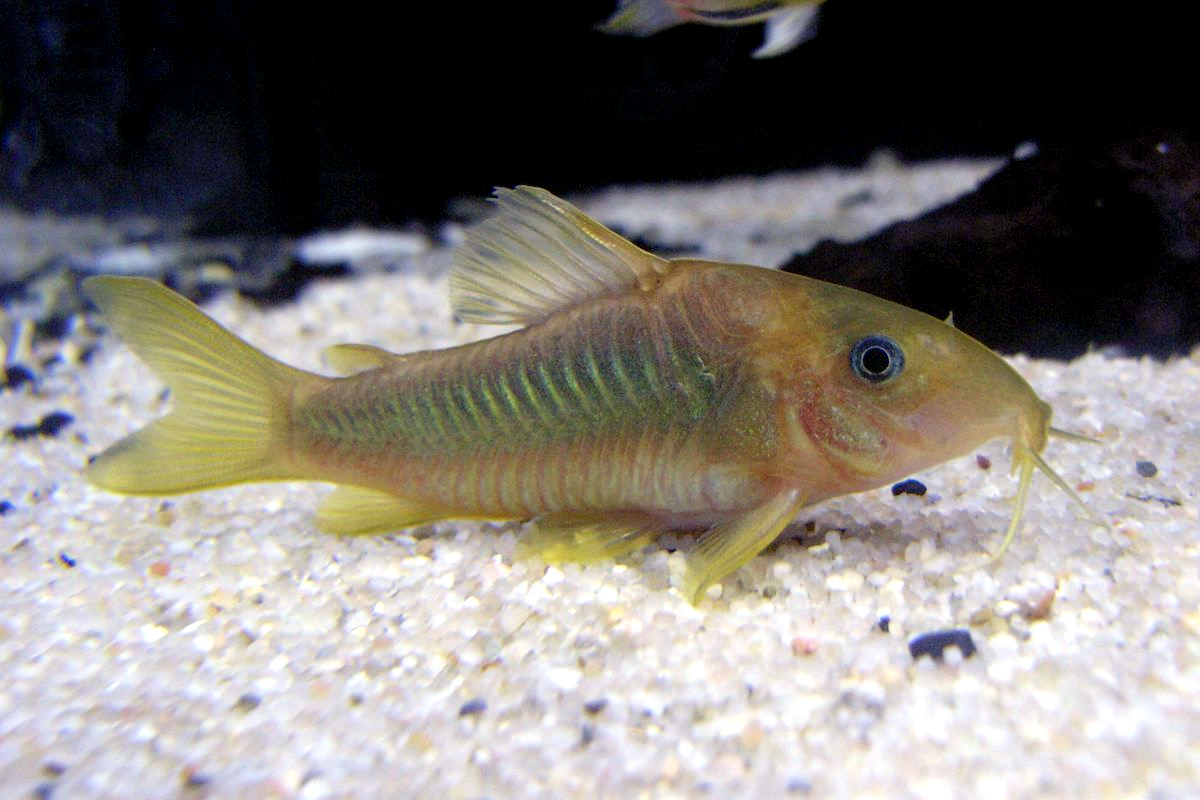
Credit: Karsten Schönherr (WikiCommons)
There are many different species of Cory Catfish, all of which are small scavenging fish with a calm peaceful nature. As such they will stay out of the way of your betta and won’t pose a threat to it or its territory. Cory Cats do like having a few plants to be able to hide in, and a soft substrate to root through for food.
Floating aquarium plants can pose a problem for bettas; for instance dwarf water lettuce and duckweed can grow quickly to cover the entire waters surface, limiting the bettas ability to breathe air. Rooted aquarium plants are therefore a better bet, as both the cory catfish and the betta fish will be able to hide amongst the leaves.
Cory catfish reach between 2-3 inches in length, and are very active scavengers, giving real life to the bottom of any freshwater tank. They are shoaling fish, and need to be kept in a group in order to remain happy and healthy.
Dwarf Gourami
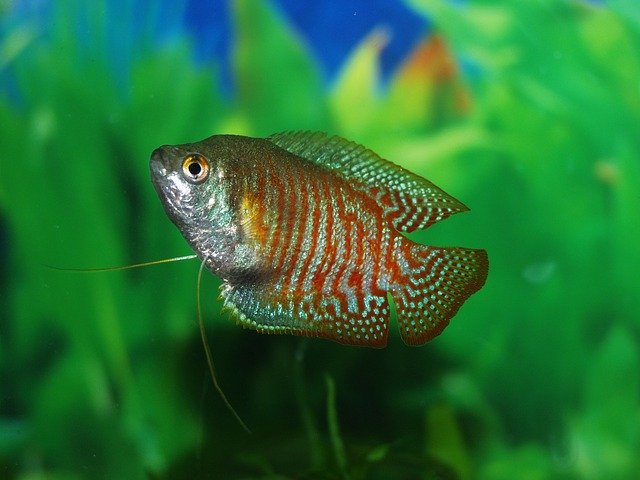
Dwarf Gouramis reach 2 inches in length as adults, and can be found in many very colorful forms so will add extra vibrance to your tank. They are peaceful by nature so won’t disrupt your betta.
Just make sure there is enough space in your tank. They are Labyrinth fish like the betta, so will need room to reach the surface to breathe. They also like having plants to retreat to, and prefer having plant life that reaches the surface.
Betta fish can be aggressive fish, especially male bettas which fight one another for space and territory. As dwarf gouramis are similar fish to bettas, the tank will need plenty of room, hiding places, and plants for the two to co-exist without incident. Dwarf gourami can get stressed easily, so it is necessary to limit this as much as possible.
Having these two fish in the same tank can be very rewarding though, as they are both bright, colorful, and vibrant species.
Bristlenose Pleco
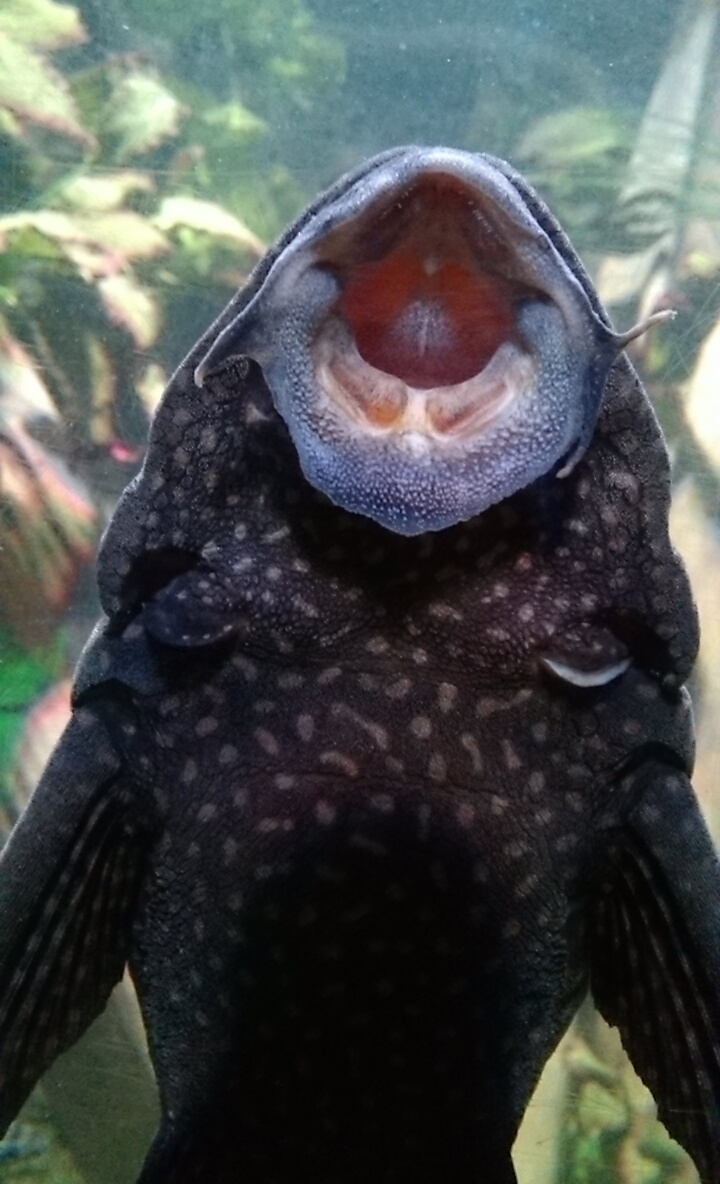
Also known as Bushy Nosed Plecos, are great sucker fish for any tank. They come available in regular, orange, and albino forms. They are a great addition to any tank with their long bristles giving them great character.
Bristlenose Plecos grow to be around 5 inches long, and are very peaceful in temperament. They are quite reclusive so will keep to themselves and not trouble your betta.
Being scavenging fish, bristlenose plecos are seen on the bottom of the tank, often on ornaments or on the aquarium glass, scraping up algae. Betta need access to the water’s surface and are normally found in the top third of the water column. Living in different areas of the tank, they will keep themselves to themselves and enable you to enjoy the tank community knowing that there won’t be any fighting going on.
Kuhli Loach
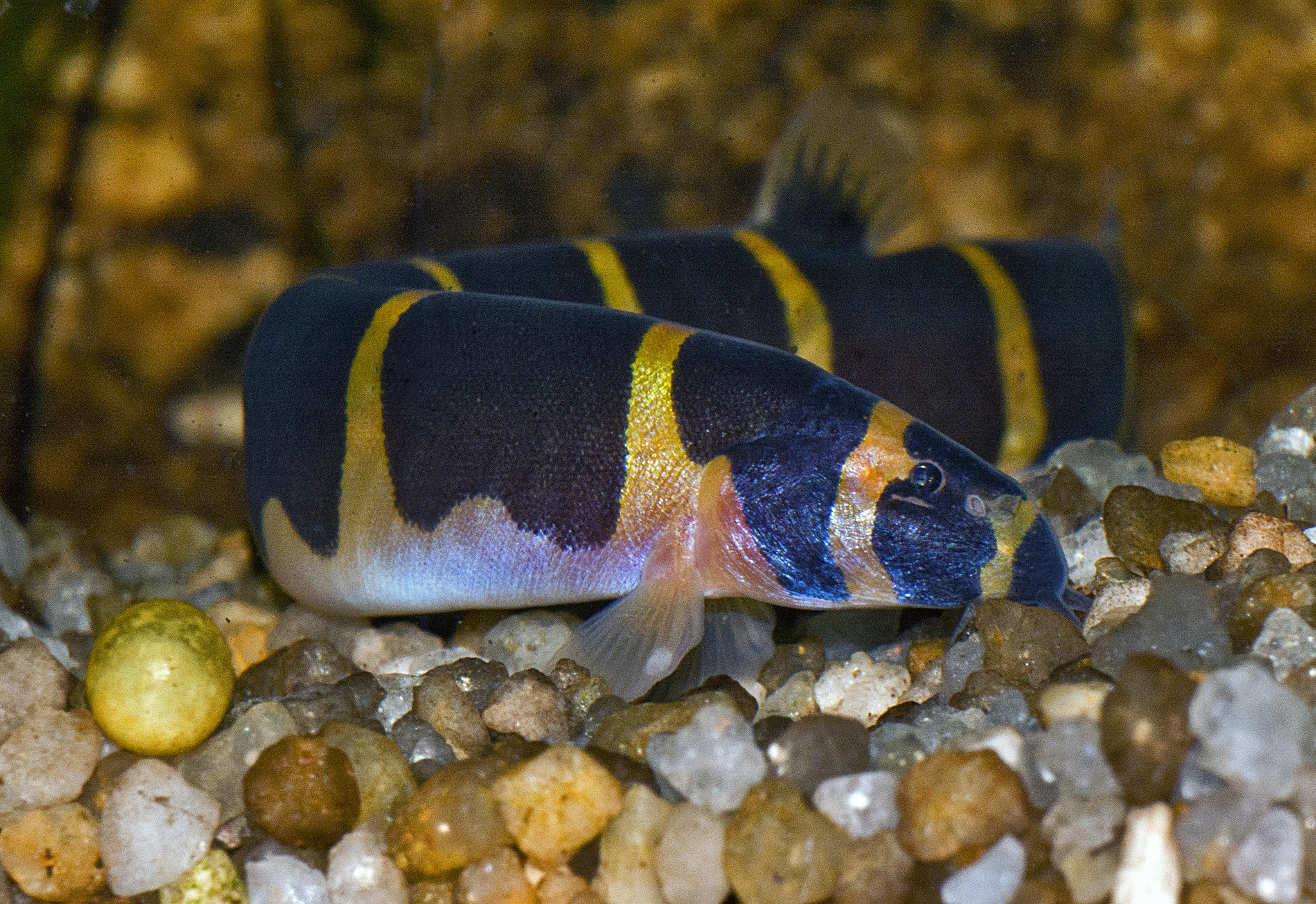
Credit: AJC1 (Flickr)
Kuhli loach are eel-like freshwater eels in the Cobitidae family along with other loach species. They are a fantastic bottom dwelling fish that will fit perfectly and be great tank mates for betta fish. Being very peaceful by nature, kuhli loaches will allow your betta to live in peace, and won’t cause any undue stress or harm.
Kuhli Loaches need a soft sandy substrate as they love to burrow and search for food. In a fish tank with gravel or more rocky substrates they will still try and burrow, but are very likely to hurt themselves doing so.
They are nocturnal fish, being more active during dusk and at night, mainly staying hidden during the day. Very social, they prefer to be in groups. A 20 gallon fish tank should be the minimum size for a group of 5. With a betta as well this should be plenty of room, as the two species occupy different zones of the water column.
Kuhli loaches are known to be escape artists, so ensure to have a lid or top on the aquarium, otherwise you could find that a loach jumps out!
White Cloud Mountain Minnows
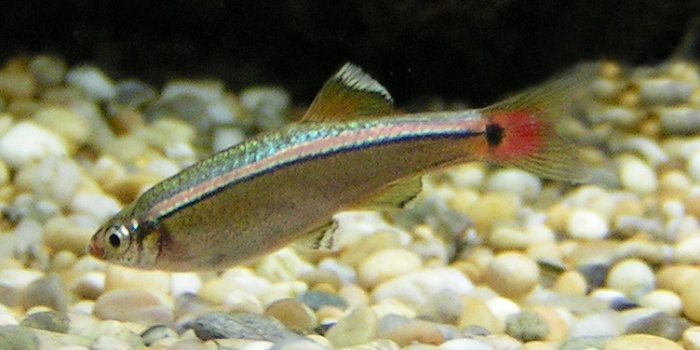
Credit: sannse (WikiCommons)
A small schooling fish, these make perfect tankmates for your betta. They are very peaceful in temperament and will keep out of the way of your betta. They are a pale white color, and there is a golden version available.
While white cloud mountain minnows prefer to be in a school, and will be more active and vibrant if kept in a school of eight or more. If you do get a school just make sure you don’t overcrowd the tank. Your betta still needs space!
While white cloud mountain minnows are small, only reaching around 1.5 inches in length, being fish living with bettas means they need a little more space. Betta fish need a minimum of 5 gallons, while white cloud mountain minnows need a 10 gallon tank. Therefore a 15 gallon tank should be the minimum for these species in a tank together.
Glass Catfish
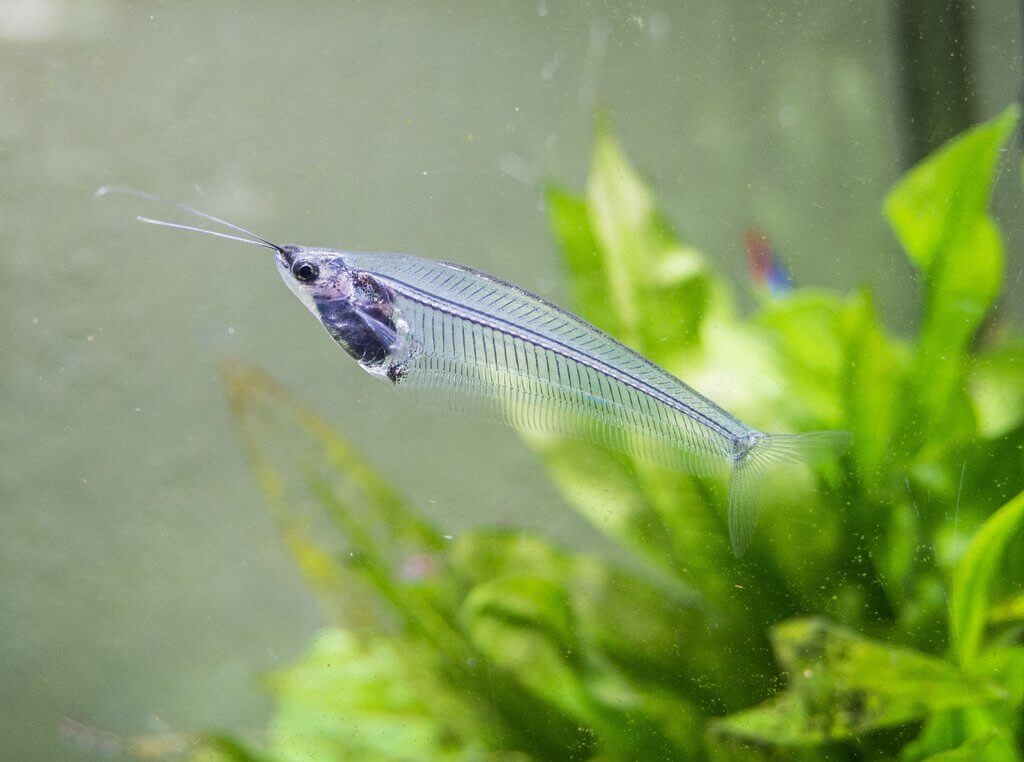
Glass Catfish get to 5 inches in length and need to be kept as a school of at least five individuals otherwise they will become stressed. They are a great fish to have in a tank, being completely see through they will be sure to get people chatting!
They are very peaceful fish and will occupy the mid-lower regions of the tank while your betta will claim the top. This makes glass catfish perfect fish to live with bettas, as they will give your betta fish plenty of space, and won’t annoy it or bite its flowing fins as they are naturally peaceful. While the have the barbels of catfish, they are free swimming in the water column and don’t remain on the substrate.
As glass catfish are social and shoaling fish, and are reasonably large, they need a minimum of a 30 gallon tank. There should be plenty of plants for the catfish to hide in and swim amongst.
Neon Tetra
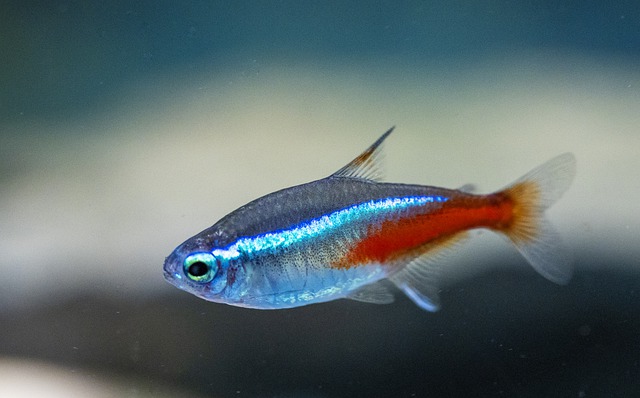
A very small and very vibrant colorful fish, they are best kept in schools of six or more. They are extremely well mannered and are ideal tankmates for bettas.
Neon tetras prefer having plenty of low light areas to find refuge in, so ensure there are plenty of aquarium plants, ideally with driftwood within the plants as well. This will create the shade they need, especially if the aquarium lighting you have is very bright. They will dart around your tank creating bursts of color!
While they inhabit the middle of the water column they won’t cause distress for betta fish. Being very small, at only 1.5 inches or so, they will give the betta plenty of space, and are peaceful fish which won’t try biting fins or fighting for territory.
To have a community tank with neon tetras and a betta, you should have a minimum 10 gallon tank, but ideally a 20 gallon tank minimum. This is to ensure that you can have an appropriately sized shoal of neon tetras, and still give the betta its space.
Conclusion
There are plenty of options to choose from when looking at tankmates for your Betta fish.
Just remember that your betta needs its own space, and remember to look down the checklist. It will save you lots of hassle and fighting fish! If you buy your fish from a pet store don’t be afraid to ask for advice there, they will be happy to help you.
Always remember that the tank needs to be clean and maintained regularly for any fish to remain healthy. This means a good aquarium filter and vacuum cleaner to clean the substrate. Products like the Python water changer can vacuum the substrate while also making water changes quicker and easier. Having a good betta fish filter will ensure a clean aquarium, while a heater and thermometer are needed to maintain temperature.

